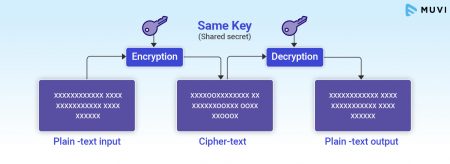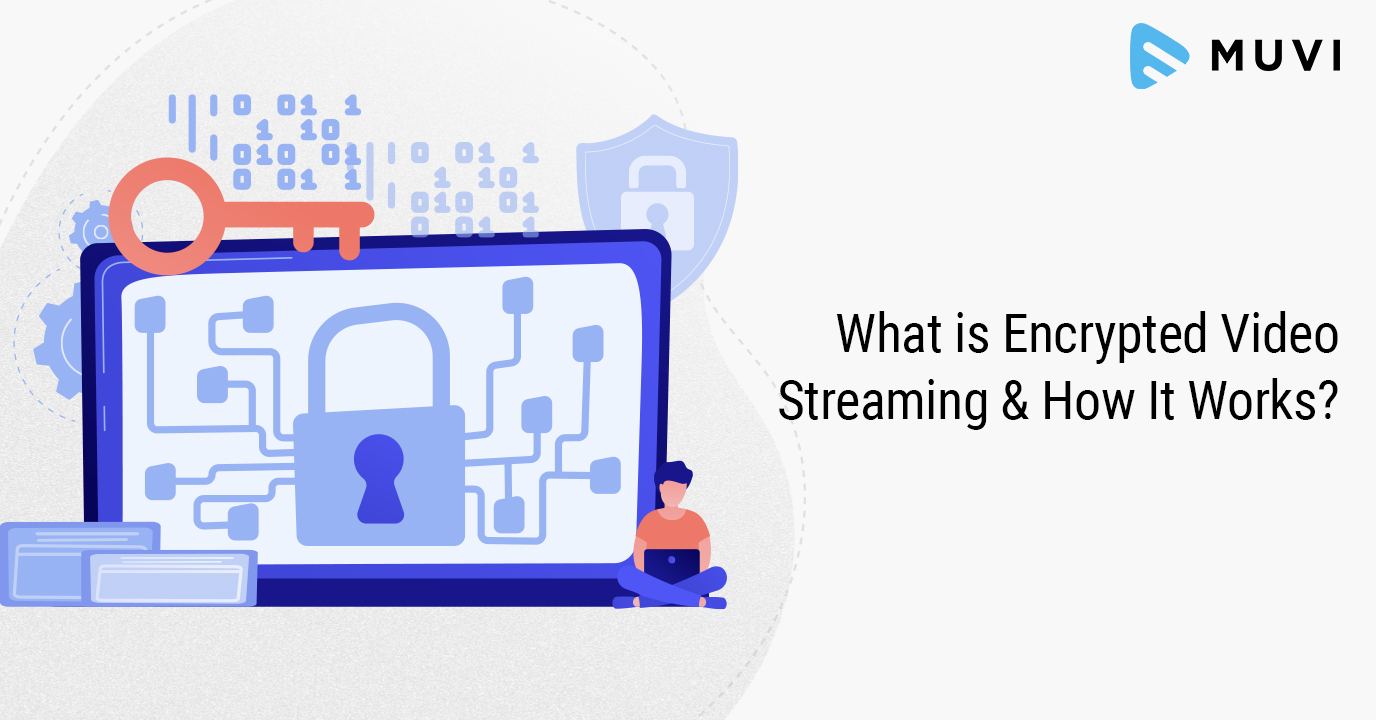For enterprises, video security is the foremost thing. Nearly 83% of enterprises cite video security as the primary influencer in their purchase decision. Therefore, video streaming services spend millions in R&D to protect content during incoming and outgoing streams, and the latest technology to grace the enterprise video security space is Advanced Encryption Standard(AES).
This post will cover everything as an enterprise video owner you should know about AES, how it works, its benefits, and, lastly, if you need it compulsorily for your business.
What is Encryption?
Encryption is a technology that prevents unauthorized access to encoded data and assets. Furthermore, with supervised implementation, encryption bars hackers from using the media assets even if the Storage gets breached somehow.
Encryption utilizes a unique encryption key (typically a number) and uses algorithms to encode readable data, technically known as plaintext, to unreadable data or ciphertext. To gain access, one needs a specific decryption key to convert ciphertext into plaintext.
What is Advanced Encryption Standard (AES)?

AES is a successor to Data Encryption Standard (DES) after the latter’s vulnerability to advanced cyber-attacks was observed. AES encrypts content in such a way that any access during transit would require decoding by authorized entities in browsers where the stream is delivered using HTTPS. The unique key is needed to encrypt and decrypt the data, without which, for hackers, the assets are high-value garbage.
AES has 128-bit encryption, which is nothing but the encryption or decryption key’s length and is highly secure. It would take monumental computation of nearly 2128 different combinations to break the encryption key even by the most powerful computers on paper.
How AES works?
Encryption at Rest – Storage
AES comes in three different key sizes: 128, 192, and 256 bits. AES converts the key and some readable data or plaintext into something random called a ciphertext. The specific key is the only way to decrypt the ciphertext into something meaningful. An AES-128 bit key offers 2128 possible combinations making the breaching probability of a brute-force attack nearly impossible.
|With Muvi, your videos are stored securely on Amazon’s AWS S3 servers using our own server-side video encryption technology, ensuring a double layer of protection.
- Encryption in Transit – During Delivery
If your business adheres to any regulatory policies that require encryption of data in transit or video delivery, In that case, we recommend using encryption of data assets during transit on every client accessing the file. Needless to say, encryption and decryption add another layer of security.
AES coupled with Secure Sockets Layer (SSL) and the latest version of the Transport Layer Security (TLS) encompasses communication between media owner and viewer’s machine. The server uses multiple protocol layers presenting digital certificates to validate and authenticate the server’s identity claim. Until authentication, both the media and viewer servers cannot establish a cipher setting and a shared key to encrypt the transferred data.
Also, deploying Datagram Transport Layer Security (DTLS) encryption from the encoder to ingest servers will allow the smooth exchange of data with no scope for tampering.
You should be able to set multiple permissions and control who can watch or access the content. This is typically done with popular security features such as single sign-on (SSO) restrictions.
Another way is to have source protection on both HLS & RTMP-based encoder connections permitting only selective IP addresses. By making user ID & password compulsory for accessing, you can keep unauthorized users at bay.
– Geo-Blocking
Geo-restriction is one powerful feature that empowers you from unauthorized users. With Muvi, you can blacklist countries you don’t want users from, and the server will block unauthorized viewers from accessing your content. You can also selectively allow IP addresses from restricted countries if you want to.
Post-playback video security used to be a major concern for broadcasters, and thanks to Digital Rights Management, thousands of videos are securely streamed across the web on any device. With Studio-approved DRM, you can restrict offline viewing, illegal downloads, limiting the no. of screens, and more.
Suggested Read: Addressing Cloud Security: Why is it Important?
AES-128 or AES-256: Which is More Secure?
Now, that you understand what an AES key is and the formats, the natural next question on your mind would be which one is more secure. Since the key is nothing but a number and the difficulty level is measured by the no. of possible combinations, naturally, a larger numbered key or AES-256 is more secure on paper. However, AES-128 is also practically unbreachable for a brute force attack virtually in all scenarios and is proven.
Do you need it for Your Business?
Hosting content online without proper security measures is like keeping your money in a bank locker with operational access to everyone at the bank. From professional hackers to packet sniffers available on the internet – all are threats to your data. It’s strongly recommended to employ the latest security measures to insulate your classified data or anything that directly impacts your business. AES protects you against snoopers, unauthorized access, piracy and is used by all industry elites alike.
Last Word:
Enterprise-grade security is a must-have for any business that believes in the power of video. Video has been a crucial part of any organization’s growth and scaling strategy. The right choice is to have an end-to-end video streaming solution that ensures encrypted content delivery seamlessly across networks, devices, and geography.
And the good thing is you don’t have to spend thousands of dollars to avail this. Muvi’s all plans provide enterprise-grade security, including the standard plan. So, if you need to invest in something now, invest in your media assets’ security. Because compromised platform security is the last thing, you would want for your business.
|Muvi offers advanced security standards scalable to your audience’s needs. Unlock end-to-end protection in an instantly deployable setup. Start your 14-day Free Trial today!














Add your comment